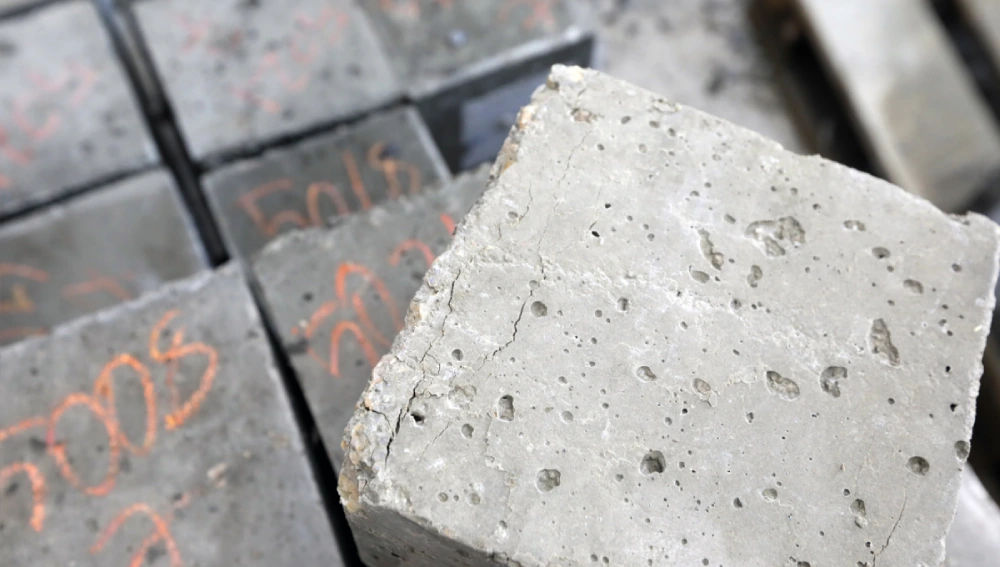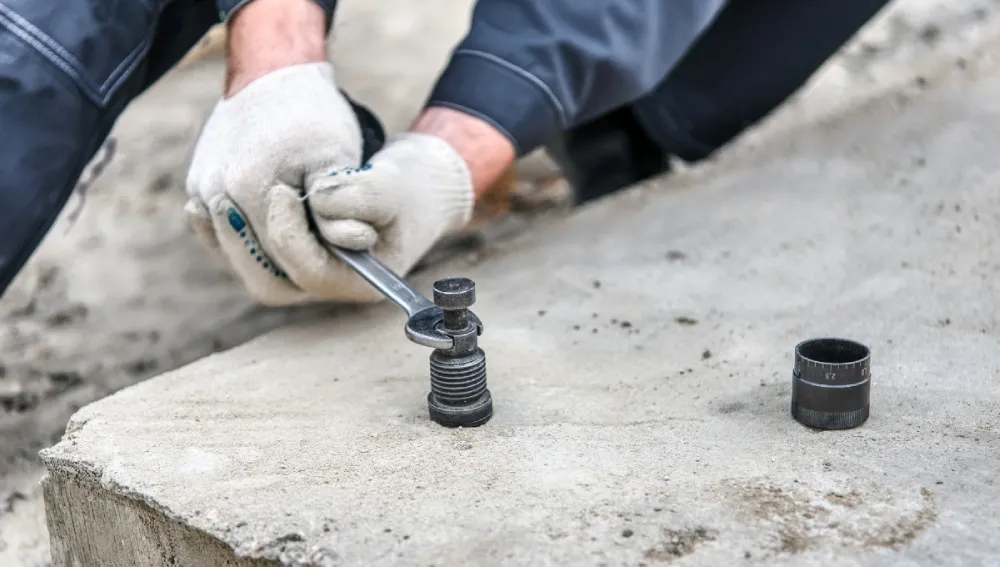As is commonly know, concrete is a primary building material that excels in strength and durability. It usually experiences two types of stresses: tension (pulling forces), and compression (pushing forces). Concrete is popularly known for its toughness in compressive strength and lacking in tensile strength, making it a notable factor in construction and structural engineering.
To give a rough value, the tensile strength of concrete is 1/10th of its compressive strength. However, it is one of the mechanical properties of concrete, difficult to estimate accurately because of increased brittleness of concrete.
This article explains in detail about the tensile strength of concrete, the factors influencing it, how to improve it and why it’s important.
Tensile Strength of Concrete

In general, tensile strength indicates the maximum tensile load or pulling force that a concrete can withstand without fracture. The tensile strength of traditional concrete can typically range between 300 and 700 psi. This is because it is weaker in tension compared to compression.
Why is the Tensile Strength of Concrete Important?
Though the concrete has lower tensile strength than its compressive strength, it still ensures the improved performance and longevity of structures. Here’s why:
Structural Performance
Cracks in concrete terribly affect the structural ability to carry loads. That’s why engineers keep tensile strength in mind when designing structures to resist cracking and maintain load-bearing capacity. This is most important for elements like slabs and beams that are more likely to experience the bending forces.
Flexural Strength
Tensile strength is indirectly connected to flexural strength, determining the concrete’s ability to resist bending. Bending is considered the biggest drawback when it creates tension on one side of a slab or pavement. Luckily, the higher tensile strength of concrete contributes to a higher flexural strength, allowing it to carry larger loads without breaking.
Durability
Cracks are loopholes for the creation of moisture content, encouraging the deterioration of concrete and embedded steel reinforcement. With proper tensile strength, the cracks can be minimized, leading to an improvement in the overall lifespan and durability of the structure.
Crack Control
Cracks in concrete are increasingly possible under pulling forces. Understanding the tensile strength of concrete allows engineers to predict how much stress it can withstand before the cracking appears. It aids people in designing structures with improved aesthetics, minimal cracking and water infiltration.
Factors Affecting Tensile Strength of Concrete

Several factors influence the tensile strength of concrete, which are explained below:
- Curing Condition: A longer curing period allows concrete to hydrate fully, promoting higher tensile strength allowing it to withstand maximum stress.
- Admixtures: Specific admixtures added to the concrete mix play a crucial role in improving the tensile strength.
- Water-cement Ratio: The water-cement ratio is a critical mixture, a higher water content may increase the possibilities of cracking, while the lower water content causes reduced workability. A balanced ratio creates denser concrete, leading to higher tensile strength.
- Aggregate Type: The size and type of aggregates like sand and rock can influence the tensile strength of concrete. Tailoring aggregates according to your specific needs resultsing in expected outputs.
How to Enhance the Tensile Strength of Concrete
The tensile strength can be improved using various methods and some of the significant points are mentioned below:
Fiber Reinforcement
Adding fibres to a concrete mix is one of the proficient ways to enhance tensile strength. fiber reinforcement involves using different types of fibers that act like microscopic reinforcements to distribute stress and bridge cracks throughout the matrix. Each type of fiber has unique properties:
- Polypropylene Fibers: This is particularly suitable for tackling shrinkage cracks, and enhancing crack resistance and control.
- Steel Fibers: The steel type is most commonly used, providing significant improvement in crack resistance and tensile strength.
- Glass Fibers: It is known for its good corrosion resistance, leading to obtaining higher tensile strength.
Mix Design Optimization
A balanced water-to-cement ratio, appropriate type and size of aggregates and admixtures can achieve improved tensile strength. The following ways involve achieving maximum tensile strength:
- Closer bond between aggregates and cement paste.
- Bringing essential modifications in the setting and hardening process of the concrete leads to better tensile strength.
- Adding sufficient water content offers denser concrete.
Prestressing
Prestressing is a process of applying compressive stress to concrete elements before the tensile stresses arise. It can be typically used in large-scale constructions like beams and bridges to reduce crack formation.
In a Summary
Understanding the importance of tensile strength prepares engineers to design and construct efficient, safe and durable structures. Compared to compressive strength, concrete has a lower tensile strength. However, it is a major factor affecting durability and performance of a structure.
FAQs
Concrete is weak in tension but strong in compression because it is brittle in nature. The cement paste added to the concrete mix contains minimal tensile stress capacity, leading to shrinkage or cracking under pulling forces. Conversely, the concrete can resist compressive forces and form a rigid structure.
The tensile strength of concrete can be evaluated using various measures such as direct tension test, flexural test (modulus of rupture), and split cylinder test. These methods determine how efficiently the concrete can resist tensile stress under different conditions.
Yes, the tensile strength of concrete is essential in certain applications such as pavements, bridges, high-rise buildings and other structures particularly subjected to dynamic loads, bending or tension that create tensile stress.
Some significant factors influence the tensile strength of concrete such as the age of the concrete, water-cement ratio, admixtures, curing conditions, or fibre reinforcements. Handling these factors efficiently can enhance the strength and make structures resistant to cracks.

